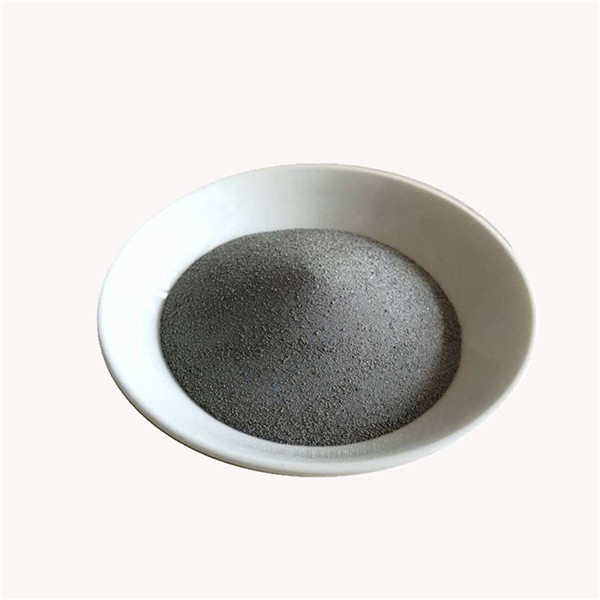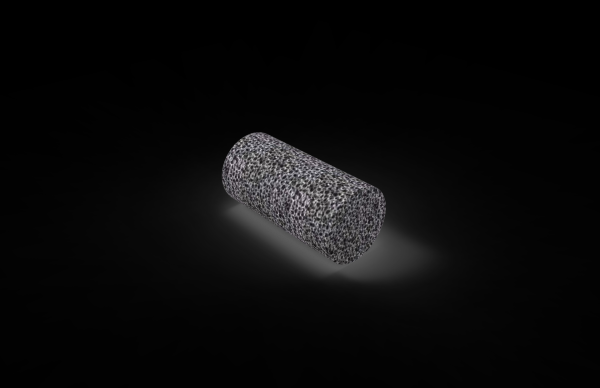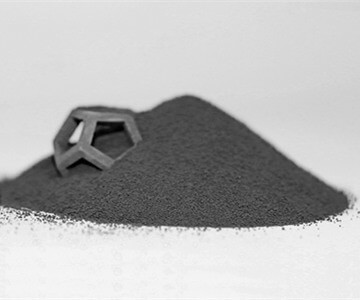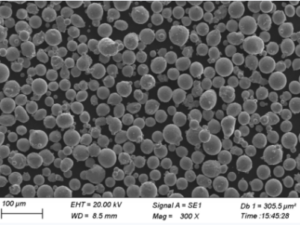はじめに
先端素材の世界では、 タンタル粉 タンタル粉末は、そのユニークな特性と多様な用途により、特別な地位を占めている。この記事では、タンタル粉末の魅力的な世界を掘り下げ、その特性、製造方法、用途、持続可能性の側面を探ります。現代産業におけるタンタル粉末の重要性を発見する旅に、ぜひご参加ください。
タンタル粉末とは?
タンタル粉末は、自然界に存在する希少で緻密な遷移金属であるタンタルから得られる、灰色がかった微細な金属粉末です。その優れた特性から、様々な合金や化合物の主成分として使用されることが多い。タンタルは高融点、優れた耐食性、生体適合性で知られ、様々な産業で貴重な材料となっています。

タンタル粉末の特性と特徴
高融点
タンタル粉末の特筆すべき特徴の一つは、その非常に高い融点です。摂氏約3,020度(華氏5,468度)の融点を持つタンタルは、極端な温度にも耐えることができ、ジェットエンジンや原子炉のような高温環境での用途に適しています。
耐食性
タンタルは卓越した耐食性を示し、腐食性の強い環境での使用に適しています。塩酸や硫酸を含む様々な酸からの攻撃に耐えるため、化学処理装置やその他の腐食環境において非常に貴重な材料です。
延性
タンタルはその頑丈な性質にもかかわらず、非常に延性があります。さまざまな形状やサイズに簡単に成形できるため、メーカーは幅広い用途向けの複雑な部品を作ることができます。
生体適合性
タンタルは優れた生体適合性を有しており、医療用インプラントや医療機器に適しています。人体内で使用される場合、タンタルは最小限の副作用を示し、インプラントの拒絶反応のリスクを低減し、患者の予後を向上させます。
タンタル粉末の用途
エレクトロニクスとコンデンサー
タンタル粉末は、エネルギー貯蔵や信号フィルタリングのためにエレクトロニクス業界で広く使用されているタンタルコンデンサを製造するための重要なコンポーネントです。これらのコンデンサは、スマートフォン、コンピュータ、および様々な電子機器に使用され、その小型化と性能向上に貢献しています。
航空宇宙産業
航空宇宙産業は、その高い強度、熱安定性、耐疲労性からタンタル粉末に依存しています。タンタル合金は、ジェットエンジン部品、航空機フレーム、およびその他の重要な部品に使用され、高高度と極端な温度での安全で信頼性の高い運用を保証します。
医療用インプラント
タンタルの生体適合性は、人工股関節や歯科インプラントなどの医療用インプラントに理想的な材料です。人体の骨組織と一体化するその能力は、治癒を早め、合併症のリスクを低減します。
付加製造
積層造形や3Dプリンティングの台頭により、タンタル粉末は複雑なカスタム設計部品の製造に利用されるようになった。積層造形技術は複雑な形状の作成を可能にし、タンタルを様々な産業にとって魅力的な選択肢にしている。

タンタル粉末の製造と加工
採掘と抽出
タンタルは主にタンタライト鉱石から得られる。タンタライト鉱石は地質鉱床でニオブと一緒に発見されることが多い。採掘と抽出のプロセスには、探査、掘削、鉱石処理などさまざまな段階がある。
精製プロセス
タンタライト鉱石が得られると、タンタルを他の鉱物や不純物から分離するための精錬工程を経る。この精錬工程は、様々な用途に適した高純度のタンタルを得るために非常に重要である。
パウダー製造法
タンタル粉末は、ナトリウム還元法、マグネシウム還元法、電解法などのいくつかの方法で製造される。それぞれの方法には利点があり、異なる用途に適した特定の特性を持つタンタル粉末が製造される。
タンタルの需給
タンタルの需給動態は、その入手可能性と価格に重要な役割を果たしている。レアメタルであるタンタルは、様々な産業からの増大する需要を満たすという課題に直面している。これらの力学を理解することは、製造業者にとっても消費者にとっても同様に極めて重要である。
環境および倫理的配慮
タンタルの採掘と加工は、重要な環境的・倫理的問題を提起する。採掘が地域の生態系に与える影響から紛争鉱物の問題まで、責任ある調達と持続可能な慣行はタンタル産業において不可欠です。
タンタル粉末の利点と課題
メリット
タンタル粉末のユニークな特性は、耐高温性、耐食性、生体適合性などのいくつかの利点を提供します。これらの利点により、タンタルは重要な用途に使用され、技術の進歩に貢献しています。
課題
タンタルはその優れた特性にもかかわらず、希少性、高い生産コスト、紛争鉱物に関する倫理的懸念などの課題にも直面している。これらの課題に対処することは、持続可能なサプライチェーンと責任ある消費を確保するために極めて重要である。

タンタルのリサイクルと持続可能性
タンタルの利用可能性が限られていることを考えると、リサイクルは環境への影響を軽減しながら需要を満たすために重要な役割を果たしています。タンタルのリサイクルプロセスは、貴重な材料の回収を保証し、タンタル産業の持続可能性を促進します。
今後の動向と展望
タンタル産業は、技術の進歩と様々な分野からの需要の増加により、絶えず進化している。潜在的な用途や新たなトレンドを探ることで、タンタル粉末の将来展望を洞察することができます。
結論
タンタル粉末は、その卓越した特性と汎用性の高い用途により、様々な産業分野で求められる材料となっている。その高い融点、耐食性、生体適合性は、エレクトロニクス、航空宇宙、医療、積層造形分野での進歩を可能にしてきた。将来を見据えた場合、責任ある調達、リサイクル、持続可能性は、安定したタンタルのサプライチェーンを確保する上で重要な役割を果たすだろう。
よくある質問
- タンタル粉末は何に使われるのか?
- タンタル粉末はどのように製造されるのか?
- 電子機器にタンタル粉末を使用する利点は何ですか?
- タンタル粉末は環境に優しいですか?
- タンタルは航空宇宙産業にどのように貢献しているのか?
Frequently Asked Questions (Supplemental)
1) What particle size and shape are optimal for additive manufacturing with Tantalum Powder?
- For LPBF/SLM, a spherical 15–45 μm PSD with low satellite content provides reliable flow and packing. Binder jetting often favors 10–30 μm with controlled agglomeration to balance spreadability and depowdering.
2) How is capacitor‑grade Tantalum Powder different from AM‑grade powder?
- Capacitor powders prioritize very high specific surface area and controlled pore size distribution for high CV (μF·V/g), along with ultra‑low metallic impurities and tight O/N/H. AM‑grade prioritizes sphericity, PSD, and moderate O levels for densification and ductility post‑HIP.
3) What standards or certifications indicate responsibly sourced tantalum?
- Look for RMAP (Responsible Minerals Assurance Process) conformant smelters and supplier due diligence aligned with OECD Guidance. EU Conflict Minerals Regulation and U.S. Dodd‑Frank 1502 disclosures further support ethical sourcing.
4) Can recycled tantalum maintain mechanical and electrical performance?
- Yes. Closed‑loop hydrometallurgical recycling and rigorous refining enable 20–50% recycled content in many grades without measurable performance loss, provided O/N/H, PSD, and trace impurities meet the same specifications as virgin powder.
5) What post‑processing is typical for LPBF tantalum medical implants?
- Stress relief at 900–1100°C in vacuum/inert, HIP at 1100–1400°C and ≥100 MPa to close porosity, followed by surface texturing or anodization to enhance osseointegration. Biocompatibility verification follows ISO 10993.
2025 Industry Trends and Data
- Ethical supply mainstreaming: Wider adoption of RMAP/RMI programs; OEMs increasingly mandate digital chain‑of‑custody from mine to powder lot.
- AM growth in healthcare: Porous tantalum lattices expand in orthopedic and dental implants due to superior osseointegration vs. Ti in select indications.
- Performance uptick in capacitors: Process refinements in sodium/magnesium reduction improve CV and reliability for high‑temp automotive electronics.
- Recycling scale: Higher yields from end‑of‑life capacitor recovery and AM scrap boost recycled content while stabilizing pricing.
- Inline QC: Broader deployment of real‑time O/N/H and PSD monitoring reduces lot variability for both capacitor and AM grades.
| KPI (Tantalum Powder, 2025) | 2023 Baseline | 2025 Typical/Target | Why it matters | Sources/Notes |
|---|---|---|---|---|
| PSD for LPBF (D10–D90) | 20–63 μm | 15–45 μm | Layer quality, density | ISO/ASTM 52907; OEM specs |
| Oxygen content (AM grade) | 0.15–0.30 wt% | 0.08–0.20 wt% | Ductility, porosity | Supplier datasheets |
| RMAP‑conformant tantalum coverage | ~60–70% | 75–85% | Ethical sourcing assurance | RMI/RMAP reports |
| Recycled content in commercial grades | 10–30% | 20–50% | Sustainability, cost | EPD/LCA disclosures |
| Relative density after HIP (AM parts) | 99.3–99.6% | ≥99.8% | Mechanical reliability | OEM/clinic reports |
| Capacitor CV (μF·V/g) improvement | Incremental | +5–10% vs. 2023 | Miniaturization/reliability | Vendor roadmaps |
References:
- Responsible Minerals Initiative (RMI/RMAP): https://www.responsiblemineralsinitiative.org
- ISO/ASTM 52907 (powder characterization): https://www.iso.org
- ASTM B708 (tantalum capacitor powders), ASTM B365 (tantalum products): https://www.astm.org
- ASM Handbook, Powder Metallurgy; Medical Applications: https://dl.asminternational.org
Latest Research Cases
Case Study 1: LPBF Porous Tantalum Acetabular Cups with Enhanced Osseointegration (2025)
- Background: An orthopedic OEM needed improved bone ingrowth and fatigue life versus Ti‑6Al‑4V lattices.
- Solution: Used spherical AM‑grade Tantalum Powder (15–45 μm; O ≤0.15 wt%), designed 65–75% lattice porosity, applied HIP and micro‑texturing; validated per ISO 13314 and ISO 10993.
- Results: Push‑out strength +28% vs. Ti benchmark; fatigue endurance limit +18%; solid regions achieved 99.85% density (CT); no adverse ion release observed.
Case Study 2: High‑CV Capacitor Powder via Optimized Sodium Reduction (2024)
- Background: An automotive electronics supplier sought higher volumetric efficiency at elevated temperatures.
- Solution: Tuned sodium reduction to narrow pore size distribution and increase specific surface area; multi‑stage washing minimized Na/Mg residues; tightened O/N/H control.
- Results: CV +9% at constant leakage/ESR; AEC‑Q200 defect rate −22%; process yield +6% with stable PSD and improved lot‑to‑lot consistency.
Expert Opinions
- Dr. Iver E. Anderson, Senior Metallurgist, Ames Laboratory (USDOE)
- Viewpoint: “Tight control of oxygen and residuals is pivotal for both ductile AM builds and high‑CV capacitor performance from Tantalum Powder.”
- Prof. Paulo J. Ferreira, Professor of Materials Science, The University of Texas at Austin
- Viewpoint: “Engineered lattice architectures in LPBF tantalum can simultaneously elevate osseointegration and fatigue resistance when coupled with HIP and surface functionalization.”
- Dr. Julie Silov, Director, Responsible Minerals Assurance, RMI
- Viewpoint: “RMAP conformity and digital traceability from ore to powder lot are quickly becoming default requirements for global OEMs.”
Affiliations:
- Ames Laboratory: https://www.ameslab.gov
- The University of Texas at Austin: https://www.utexas.edu
- Responsible Minerals Initiative: https://www.responsiblemineralsinitiative.org
Practical Tools/Resources
- Standards and testing: ASTM B708 (capacitor powders), ASTM F2989 (metallic powders for AM), ISO/ASTM 52907 (powder characterization), ISO 10993 (biocompatibility), ISO 13314 (porous metals compression)
- Sourcing and compliance: RMI/RMAP conformant smelter lists and OECD Guidance tools
- Metrology: LECO O/N/H analyzers (https://www.leco.com), BET surface area, ICP‑MS for trace impurities, laser diffraction PSD
- AM design/validation: nTopology (lattice design), Ansys Additive (scan/distortion simulation), CT scanning for density mapping
- Data/benchmarks: NIST AM Bench (https://www.nist.gov/ambench); MatWeb materials database (https://www.matweb.com)
Last updated: 2025-08-22
Changelog: Added 5 targeted FAQs; introduced 2025 trend KPI table with sources; provided two recent case studies (AM implants and capacitor powder optimization); included expert viewpoints with affiliations; compiled standards, sourcing, and metrology resources for Tantalum Powder.
Next review date & triggers: 2026-02-01 or earlier if RMAP guidance or ASTM/ISO standards change, OEMs update AM/feedstock oxygen or PSD limits, or new clinical/AM performance data is published.
